This is my most time-consuming model of all time. I began working on this in, I think, summer 2021, when there was still the pandemic going on, to some degree. I had recently graduated as a architect, and landed in a part-time job as a researched. And I was dreaming - or maybe planning - of beginning my Ph.D studies. Now, actually, and confusingly, term Ph.D is generally used even though one in the field of architecture graduates as a Doctor of Science (or technology), TkT aka Tekniikan tohtori, not as a Doctor of Philosophy. On the other hand, my thesis (I'll get to it...) is more philosophical that technical so, in the end, maybe it's all right. Back to the MOC!

So, I was a researcher on apartment design, and it was nice and interesting but my passion, nevertheless, lies in the history of architecture on Finland. Finland had a strong and multi-faceted period of architecture in the turn of the 20th century, now known as jugendstil/art nouveau period and back then usually referred as new style period. I have been building many models inspired by this theme - you can find them on the architecture tag of this blog - and made my (award-winning!) Master's Thesis on one interesting Helsinki-based architect of the time, Gustaf Estlander (there's a book on him on the way, funded by the Finnish Culture Foundation). And during the pandemic, I was embarking into the doctoral studies, with the subject setting on the same time with Estlander but on a closer location; my hometown, Tampere. This model evolved alongside the idea of the thesis, which is - and I am doing it full time now, again with funding from Finnish Culture Foundation - about the bank architecture of Kauppakatu of Tampere during the years 1899-1907 and beyond. Six banks, five private ones and one savings bank, were constructed at the time, very close proximity to each other and largely different in style and shape. It's a fascinating array of different solutions to similar architectural assignments.

This building is a synthesis or an amalgam of two of those projects. Tampere Savings Bank was designed by the most famous office of the time, Gesellius, Lindgren & Saarinen, based on a contest project in 1900. It was built only partly; the first and narrow section in 1902 and slightly larger section in 1903. There was an impressive tower planned into the corner of the street, but it was never built; the project was too ambitious for a savings bank of this industrial town. A local architect Birger Federley finished the building in 1920s with mostly classical design that, nonetheless, adapted into the romantic original design with similar subtle details. You sure can read more about this later on on the 1st and 2nd article of my thesis - I'm planning to write them in English.
 |
Tampere Savings Bank's archive. Gesellius, Lindgren & Saarinen 1901.
|
A few years ago I had measured how large MOC would I have ended up with if I'd just built the original project of Tampere Savings Bank in minifigure scale. It would have been about 128 x 96 studs, aka 4x3 modules. That would have been impossible to store, so I buried the idea. However, I came back to the design from time to time. The tower exists only in these drawings; building it would somehow make it more real. So I began building it, not in exact scale but close. I also took the northmost part of the building, with a little tower (the ground floor hosts a funeral office) because I liked its design. I made a drawing while sitting on a train to Helsinki - I usually sketch MOCs only when I can't build them...


The final design stayed relatively true to the sketch (where I did not really remember how the tower roof should work). It became, if something, a bit simpler as I ditched one bay window tower. However, the sketch did not take the shorter sides into account - I was going to make a 2x3 module model as it fits on my part storage furniture. The other side would have the smaller tower, as above, but what to do with the other side - and the corner, as the savings bank has only one corner? I turned into another one of Kauppakatu's banks: Tampereen Osake-Pankki, the Tampere Share Bank, designed by Birger Federley 1904 onwards and finished in three phases in 1905, 1907 and 1916. On the Hämeenkatu side, it is quite ordinary but well-balanced Finnish jugendstil housing block, inspired by English and American villa architecture via paragon designs by Gesellius, Lindgren & Saarinen - including the Savings Bank but also houses Olofsborg, Eol and Doctors' house in Helsinki; I've built an house inspired by Eol before, here. Federley's bank had became a familiar and meaningful part of Tampere landscape to me and I wanted to pay it a little tribute. I also wanted to make a softly curving corned with similar design to the yellow Eol-inspired house, flanked by a triangular gable with a tall bay window tower. And add in some nice cavern-like loggia balconies, which appear on both Tampere Savings & Share banks.
 |
Tampereen rakennusvalvonnan arkisto. Federley 1905.
|
One of the most amibitious features of this project were the windows. Small square panels were the way to go to Finnish new style architects, as inspired by, for example, H. H. Richardson's villas and also by Wiennese secession. LEGO does not make many small-panelled windows - except with 45 degree angle "diamond" grid, as in fences and shutters. I've used those in the past, but they don't quite work. Another solution would be old windows, which are beautifully designed and shaped. They have a couple of issues, though: even though they include 1x1, 1x1x2 and 1x2 windows, the framed end up too big and the panes too small; secondly, they, and especially the smallest ones, are rare - and mostly bought out by my mate Oskari. I've used them and I will use them, but not as small-pane grids.

My solution was to build the grids with bars and axles. This made it possible to copy exact designs. It required quite a heavy structures of Technic bricks and such, but then again they made the overall model stronger. Secondly, I used a big bunch of 2432 Tile, Modified 1 x 2 with Bar Handle as the window frames. With those bar grids I was going to emit the glasses anyway, so those bar tiles worked just fine; they have smaller pane than the usual 2x2x2 window, and the rounded bar makes a neat detail. Foremost, they're cheap as soap. Right now, on Bricklink, you can get 355 0,0016 € a piece. Yes, that is three zeros, so 355 costs total 0,568 €. That's about 1/6 of a collectable minifigure.
I made the window apertures using relatively recent inverted 1x3 arches to capture the gentle shapes of the style. They're turned sideways, stud-to-stud, and slammer together using 1xX L-panels for flush and gapless surface. Pretty nice, isn't it? It's like a curtain wall hanging from a pillar structure. It also makes the walls very strong (and hard to dissassemble for tweaking). Howerver, the first window axle is different; it uses recessed bay windows, a type of window panel with the side panes turned around 45 degrees inside. This was common in Finland at the time, following the debut on the Doctors' house, though it can be tracked back to some earlier American villas (at least). It is a bit robust and different it style, but allowed a clean design on the inside - which was much needed, as I needed to build some interiors too! You're about to find out why this took so long to finish...

But first - a few words about the bottom floor! It's clad in light (Kuru) granite, with shop windows arched by robust, well, arches. It's close to the real thing; I'm rather happy with my macaroni tube arches (you can do anything with those parts). And little non-working doors with their brass handles. It's a stable bedrock for a house to stand (I think the passage portal on the left was re-used by some Latvian architect in a house in Riga, but using something cement-like imitating stone; I saw it couple of weeks ago). I also built two portals. The one leading to the stairwell has been inspired by the portal of the first part of Savings Bank - with heavy wooden door with black iron fittings:
The second is inspired byt the portal of Tampere Share Bank, as well as similar ones in Normal building from 1904 and Eira Hospital from 1905. I built this one during the special pre-hear streaming of Circle's newest album Henki; the door, which I am very happy with, is more recent:


That's it from the ground floor! The interior; an integral part of architecture (no shit). My modular buildings have always been hollow. No interior seen, no interior built. No working for vain. But interiors are interesting, and seeing countless cross-section drawings - and some real stairwells - I wanted to make one; with real grandiose curved stairwell with border ornament and arched top and colours and railing... This was inspired by the cross section drawings of Tampere Savings Bank and Doctors' house in Helsinki, both by Gesellius, Lindgren & Saarinen. All these stairwells (Savings Bank has three major ones!) have been retrofitted with a lift. Natural, needed, but also ruining the composition of space, the airiness of the well. Not here. Half of the stair has been cut off, of course, because this is a cross section. This may cause some confusion. But overall - the stairwell is realistic. The dimensions, the stair height of one plate - they're all quite close to real life. The structure that keeps the stairwell intact is the inner curve, made with 1x2 round bricks; the outer curve with the wall is connected to the middle ring. The wooden hand rail is unfortunately a bit studdy, but you can't get everything... The cutted surfaces (well, most of them, not the roof) show also the techniques and the materials: red brick, plastered on. Wooden floors and, on the right side, ceilings too. Wooden roof strusses - and bricks laid on the attic floor to block fire, as per regulations! This thing weight so much! And took almost 2 years to complete! The apartments have little brass (metallic gold) name plates!

The ground floor of the stairwell has a fresco based on my namesake Eero Järnefelt's famour Koli landscape painting (Koli is in Nothern Carelia where I'm from). This is, of course, very simplified. The cross section drawing of the savings bank has many frescoes, and a large pointillistic version of this Koli landscape is in Eliel Saarinen's Helsinki Railway Station restaurant (currently Burger King). This fresco was one of the first things I build for the interior, about 2 years ago.

The actual depth of the building is too thin and not realistic. As I told above, real building in minifigure scale make very big models, so I had to cut out something. The rooms itself are realistically sized, though; the right side should have a hall between the dining room and the stairwell. The rooms on the left side and middle-class apartments, with nice ceramic ovens (some based on real designs) and oak parquettes. The right side has upper-class apartments with fixed furniture, nature-themes frescoes, wood paneling and wood-panelled ceramic ovens.
This apartment features a poet's club, a very masculine atmosphere of whiskey, cigar smoke and bad jokes way past their expiration date;
This apartment is currently empty, but the inhabiting lady is just opening the door. I'm very happy with these chairs - such chairs with tall, triangular back rest were popular at the time.
In this apartment, a family is having a dinner and the (dusty!) maid is bringing in a pie. Servants were important in housing design at the time; most apartments with three or more rooms had a separate entry in the kitchen for the servants. They disappeared finally around the Second World War.
This apartment is empty as well, and features a home office of a clerk; Here the chairs have again triangular back rests, but they're simpler in design. The oven is based on a design by Gesellius, Lindgren & Saarinen.
In this apartment, the husband is setting a fire to the oven, while his wife is chatting while having a coffee; the doors with a round, coloured-glass window on them were common on Gesellius, Lindgren & Saarinen designs.
And in this apartment, the inhabitant has moved the furniture to make room for her hobbies; the cat is helping, and I'm happy with the lamp.
The ground floor has a pharmacy. They were common at the time and often featured an unique furniture designed by and architect; this is based on some real-world Finnish examples. Funnily enough, this building doesn't feature a bank - but probably the banking rooms weren't so important part of the Savings Bank in the end! More of this in the thesis... And I did build a bank a year ago, after all!
And now we're at the end of the tour. This one was displayed at Pii Poo's Helsinki event, with huge audiences and me in the live TV broadcast. And I also displayed this at the opening of my Hervanta Library exhibit mark three. Now it is in my home. And - there's more - one modular building a bit larger than this (but with less interior) and a villa with no interior at all but with some fancy trees. So there is content. Hopefully also time to post it.
-Eero.


































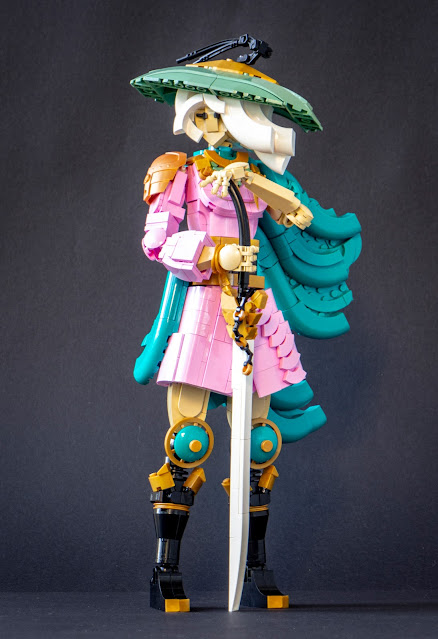






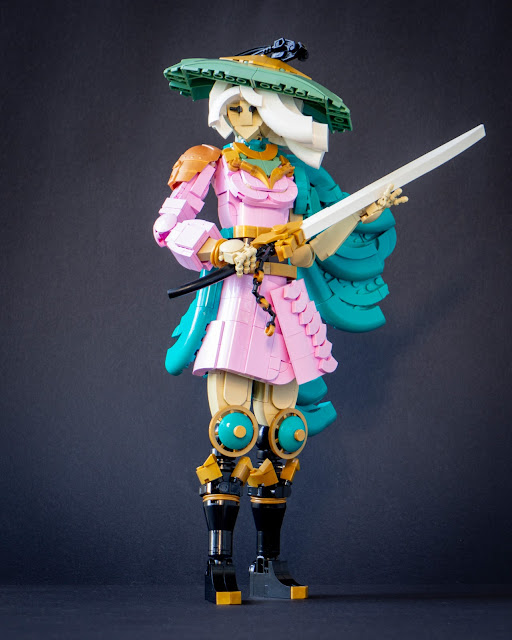






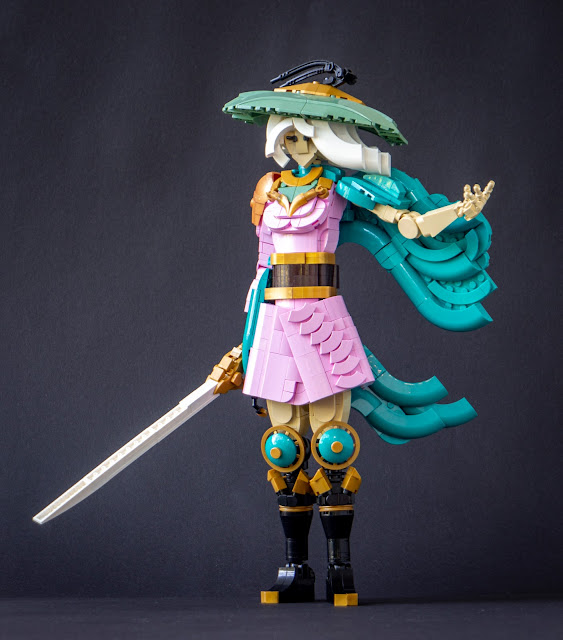



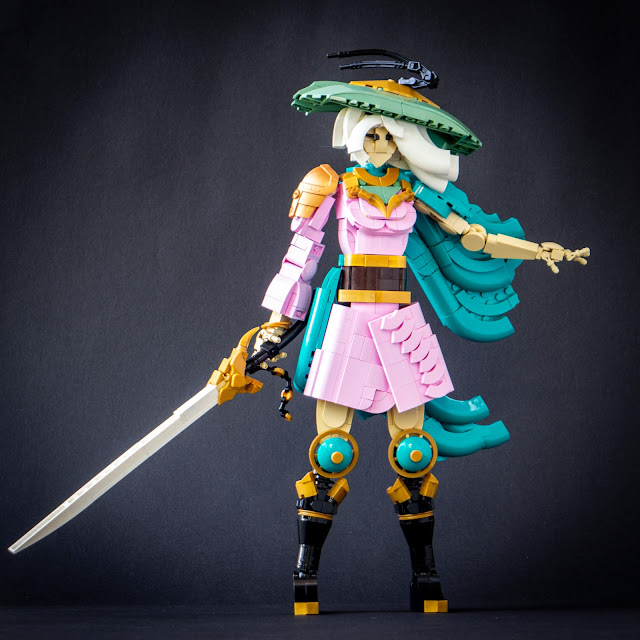








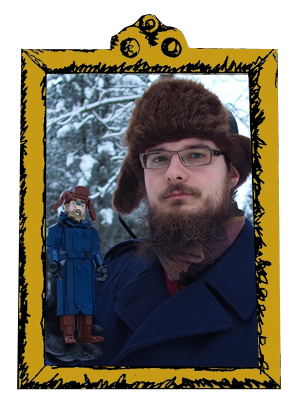



.jpg)





